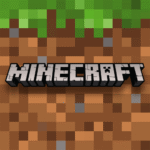The Most Underused Breathing Styles in Demon Slayer
Popular Now
 Rust
Rust
 Brawl Stars
Brawl Stars
 Fortnite
Fortnite
 Roblox
Roblox
 Warframe
Warframe
 Minecraft
Minecraft
 Geometry Dash
Geometry Dash
 Among Us
Among Us
 Poppy Playtime
Poppy Playtime
 Call of Duty
Call of Duty 
The world of Demon Slayer: Kimetsu no Yaiba is rich with intricate lore, breathtaking animation, and, most notably, a diverse range of swordsmanship techniques known as Breathing Styles. From the fiery attacks of Flame Breathing to the fluid movements of Water Breathing, each style is a unique expression of its user’s personality and abilities. While some styles, like Water and Thunder Breathing, receive extensive screen time and form a cornerstone of the anime’s narrative, others are given surprisingly little focus. This lack of visibility, however, does not diminish their power or significance. In fact, some of the most fascinating and powerful techniques are the ones we see the least.
This article will delve into some of the most underused Breathing Styles in the Demon Slayer series, exploring their origins, their unique forms, and why they deserve more attention. We will analyze how these styles stand out from the more common ones and consider the immense potential they hold in the hands of their skilled, yet often-sidelined, wielders.
 1. Serpent Breathing
1. Serpent Breathing
Serpent Breathing is a unique and deadly style used exclusively by the Serpent Hashira, Obanai Iguro. Derived from Water Breathing, this style is a perfect reflection of its user’s twisted and unyielding nature. Unlike the flowing, graceful movements of Water Breathing, Serpent Breathing is characterized by its unpredictable, winding slashes that mimic a slithering serpent. This is made possible by Obanai’s uniquely shaped Nichirin Blade, which is more like a scythe or whip, allowing for complex and serpentine movements that are difficult for demons to anticipate.
Despite being one of the fundamental techniques used by a high-ranking Hashira, Serpent Breathing’s forms are rarely shown in the anime, with only a few instances highlighted in the manga. We know of forms such as “Winding Serpent Slash” and “Serpent’s Spiraling Hold,” which showcase a style focused on precision and indirect attacks rather than brute force. The lack of detailed exposure for this style is a major missed opportunity, as its visual flair and tactical depth are second to none. The combination of Obanai’s twisted blade and his slithering movements creates an aesthetic that is both beautiful and terrifying.
2. Mist Breathing
Mist Breathing, a style used by the young prodigy Muichiro Tokito, is another technique that is remarkably underused relative to its power. A direct offshoot of Wind Breathing, this style is centered on swift, disorienting movements that create the illusion of a mist-shrouded battlefield. Muichiro’s small frame and baggy uniform only enhance this effect, making him an incredibly difficult target to track.
While we see Muichiro’s incredible combat prowess during his fight with Upper Rank Five, Gyokko, the full breadth of Mist Breathing’s forms remains largely unexplored. The style’s Seventh Form, “Obscuring Clouds,” is a unique creation of Muichiro himself. It allows him to dramatically alter his speed, appearing to move slowly before disappearing in a flash to confuse his opponent. This form, along with others like “Eight-Layered Mist,” highlights a combat style that is more about psychological warfare and misdirection than raw power. For a technique that is so visually and tactically interesting, it receives surprisingly little narrative focus, leaving fans to wonder about its full potential.
 3. Insect Breathing
3. Insect Breathing
The unique Insect Breathing style is the personal creation of the Insect Hashira, Shinobu Kocho. Unlike other Demon Slayers, Shinobu lacks the physical strength to decapitate a demon, a fundamental requirement for a demon slayer. To compensate, she developed a style that is a branch of Flower Breathing (which in turn is derived from Water Breathing), focusing on agility, speed, and poisoning her enemies. Shinobu’s slender Nichirin Blade is designed specifically for stabbing and thrusting, allowing her to inject lethal, wisteria-based poisons into her targets.
While Shinobu plays a crucial role in the story, her Breathing Style itself is shown in action far less than those of her fellow Hashira. The forms, such as “Butterfly Dance: Caprice” and “Dance of the Dragonfly: Compound Eye Hexagon,” are more tactical maneuvers designed to inflict a series of shallow wounds rather than a single decisive blow. Insect Breathing is a brilliant example of a character overcoming a physical limitation through ingenuity, but its unique mechanics are often overshadowed by the high-impact techniques of other slayers. Its lack of forms and general brevity on screen make it one of the most underutilized, yet conceptually fascinating, styles in the series.
The Value of Underused Styles
The underutilized Breathing Styles in Demon Slayer are more than just side notes; they are a testament to the creativity of the mangaka, Koyoharu Gotouge, and the depth of the series’ world-building. Each of these styles—Serpent, Mist, and Insect—demonstrates a unique philosophy of combat that goes beyond raw strength. They showcase flexibility, misdirection, and strategic thinking, proving that there are multiple paths to defeating a demon.
These styles offer a stark contrast to the more straightforward techniques of Flame and Stone Breathing, providing a richer and more nuanced understanding of the Demon Slayer Corps’ immense versatility. While the anime and manga give priority to the primary characters and their signature moves, a deeper appreciation of the series comes from recognizing the genius behind these underused, but equally powerful, techniques. They remind us that true strength comes not just from power, but from innovation and adaptability.










 1. Serpent Breathing
1. Serpent Breathing 3. Insect Breathing
3. Insect Breathing